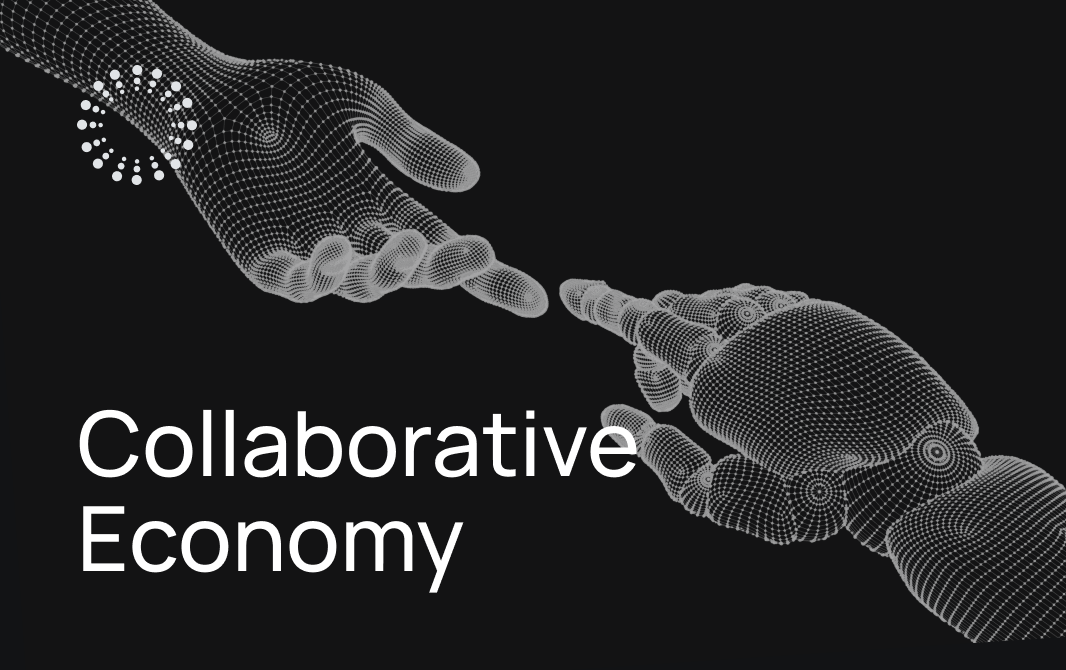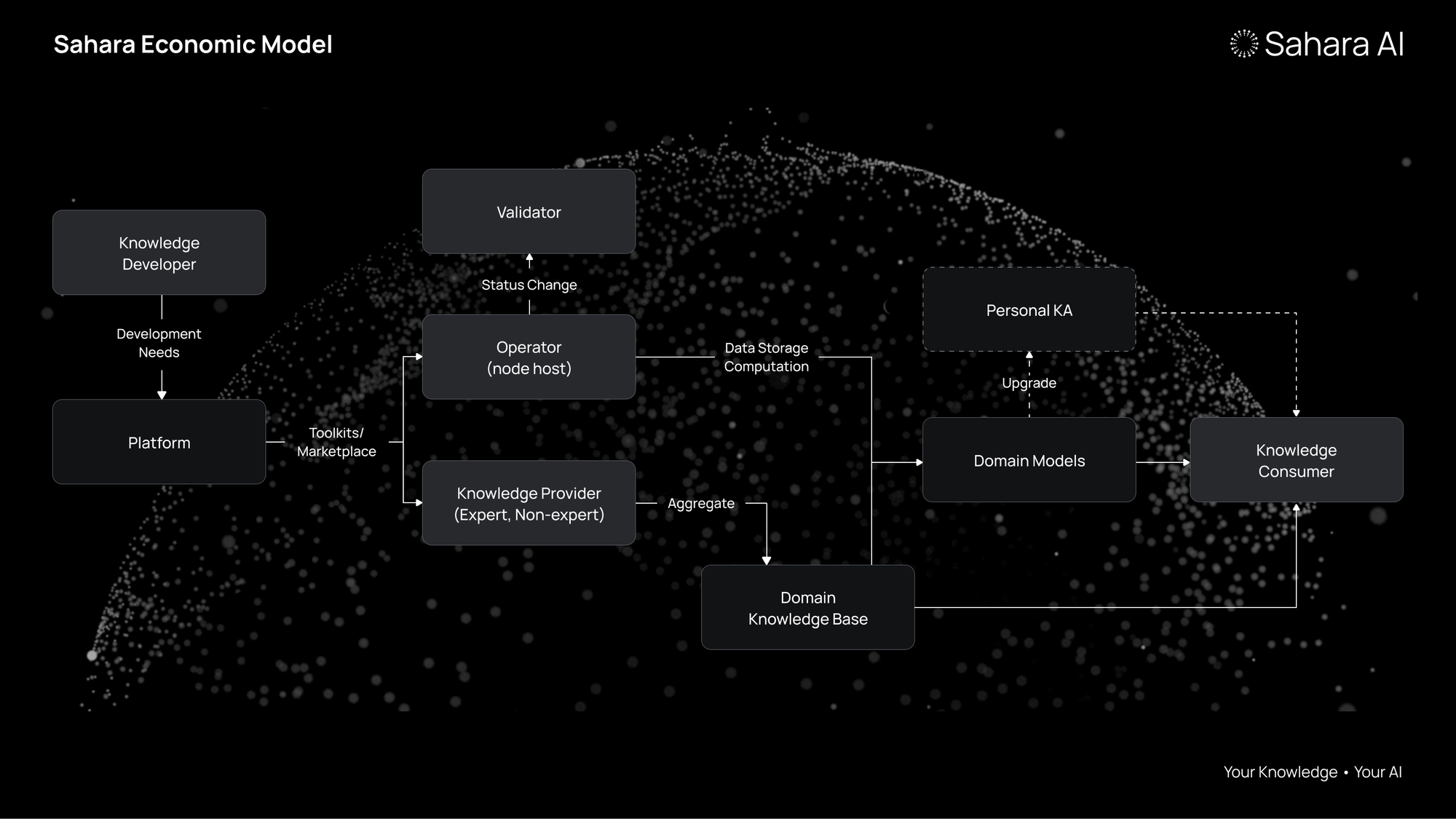Explaining Sahara AI’s Collaborative Economy
Most AI remains trapped in a Web 2.0 paradigm: users trade data for access to AI/ML tools. Sahara's Collaborative Economy offers a human-centered alternative that protects personal data and funds all contributors.

Explaining Sahara AI’s Collaborative Economy
Artificial intelligence (AI) is a collaborative technology, created from the combined efforts of millions writing comments online, uploading images and video, and otherwise cataloging and labeling online data over decades.
As tools for human-AI collaboration change the nature of work, the fundamental economic relationship between technology companies and consumers must change from one trading free access to tools for private data to one that ensures all participants are fairly compensated for their work. Otherwise, there won’t be much of an economy left to participate in.
Sahara provides a decentralized AI network to support a new form of economy designed for the Age of AI, by providing a fast, personalized, and painless-to-use system that can protect its users’ privacy, guarantee the provenance of their data, and foregrounds the human experience.
How Sahara’s Collaborative Economy Works

Rather than a simple exchange, Sahara uses validation staking to incentivize an economic ecosystem. The system uses web3 technologies to keep training personal data separate from public models and properly attribute information when it’s used in a model so its owner can be compensated.
There are three ways of earning compensation: people can provide knowledge in the form of data, models, or services like labeling or collection; they can help maintain the decentralized infrastructure by running a node or providing storage, or they can provide validation services to maintain the integrity of the network itself.
This breaks down into five distinct roles to play in the Sahara Economy: Knowledge Consumers pay for inferences generated by models on the Sahara Network, introducing funds into the network; Knowledge Providers receive compensation for rendering services such as collecting data or labeling it; Knowledge Developers use those services and data to create models to receive funds from providing inferences to Consumers; meanwhile [Node] Operators provide computational power and storage resources; and Validators verify information accuracy and provide recourse for bad actors abusing the system.
This creates a self-sustaining ecosystem that allows network participants to benefit from the work they contribute, whether it’s operating a node, contributing knowledge and data, validating data, fine-tuning a model, or building an autonomous agent.
Why the Existing Economic Relationship Does Not Work
Historically, a simple dynamic has governed the relationship between users and AI/ML. Companies asked for access to consumer data in exchange for access to their tools—and for the most part, it worked. But on November 30, 2022, OpenAI released ChatGPT, a powerful large language model (LLM) trained on publicly available databases and capable of generating competent text and code. All of a sudden entire employment categories were at risk of being replaced by a model created from publicly available content.
As AI’s capabilities increase and threaten millions more jobs, the old model of hoarding data and selling it back to customers will eventually stifle economic opportunity and innovation. Sahara’s model relies on a decentralized network, keeping consumer data private, and an attribution system to ensure everyone who participates in the knowledge economy receives fair compensation.

